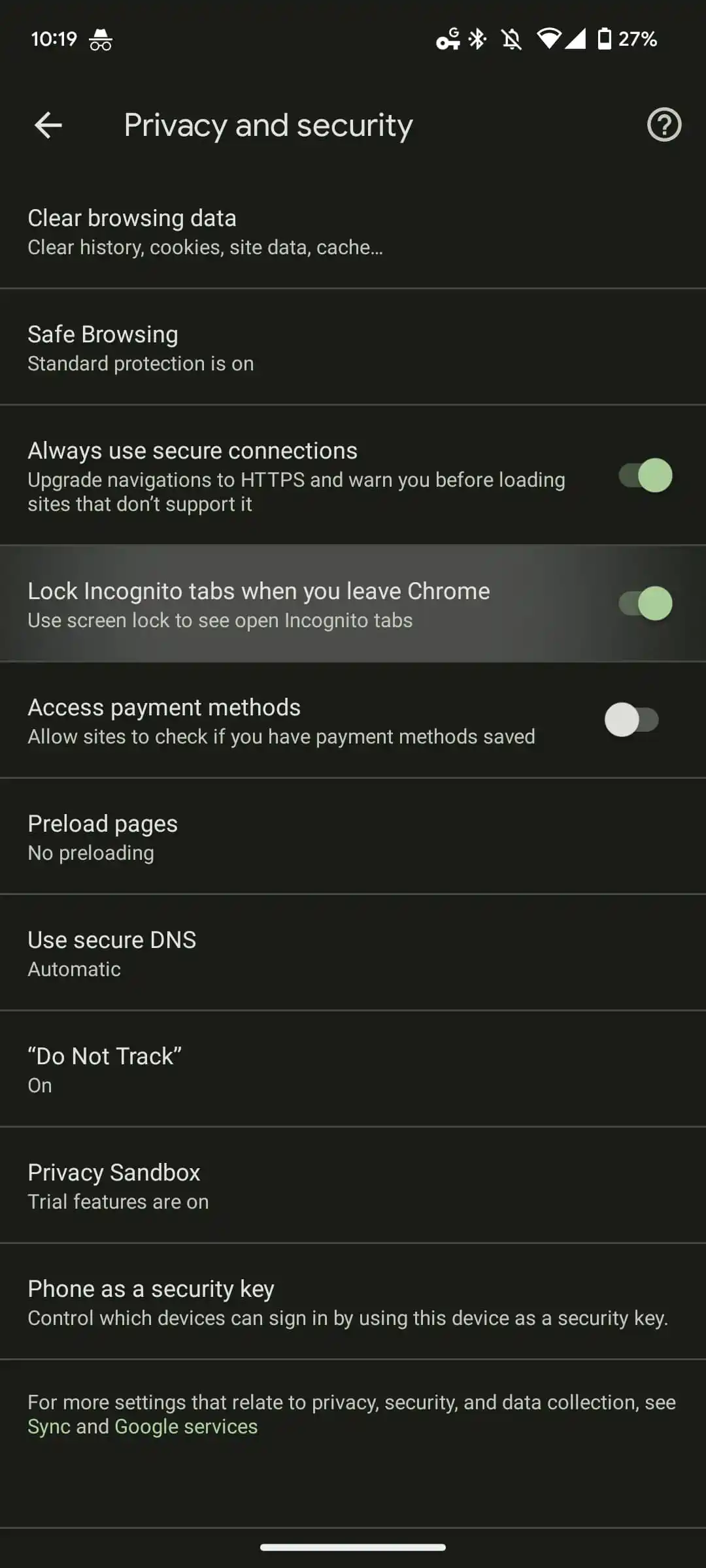Browsing in incognito mode on your smartphone is about to get even better. Chrome developers are working on a very important feature that will finally make browsing in incognito mode a lot sensible and secured. This new feature will give the chrome browser the ability to require your fingerprint in order to access incognito tabs.
Chrome first introduced this feature on iOS devices in 2021 and they are now getting ready to make it available on Android operating system. In simple terms, the feature will require you to scan your fingerprint any time you close and open an incognito tab on Android.
When browsing in incognito, there is another button that allows you to see other tabs. This button gives you the option to see other tabs that you have opened in incognito. You also get the three-dots options button which allows you to close all incognito tabs at once. It also gives you access to settings and closes all incognito tabs when you close the chrome browser.
The Chrome Incognito Fingerprint for Android is not Active by Default. 
The new Chrome incognito fingerprint protection for Android is not set-on by default. You may have to enable it in the chrome settings. You first tap on the three dots at the top right corner of your chrome browser > Settings > Privacy and Security > Lock incognito tabs when you leave Chrome: Use screen lock to see open Incognito tabs. 
Enabling this feature will require that you verify your fingerprint. You can also use your unlock pin code. This new feature becomes very useful when you are giving your phone out to someone else and you don’t want them to know your browsing information. (Provided they don’t know your pin code).
Availability of Chrome Incognito for Android
Google has announced that the rollout to Android users is already in progress as part of Data Privacy Day. Currently, it is not widely available as of Chrome version 109. However, those who want to get the feature immediately can enable this flag to use it. chrome://flags/#incognito-reauthentication-for-android.





